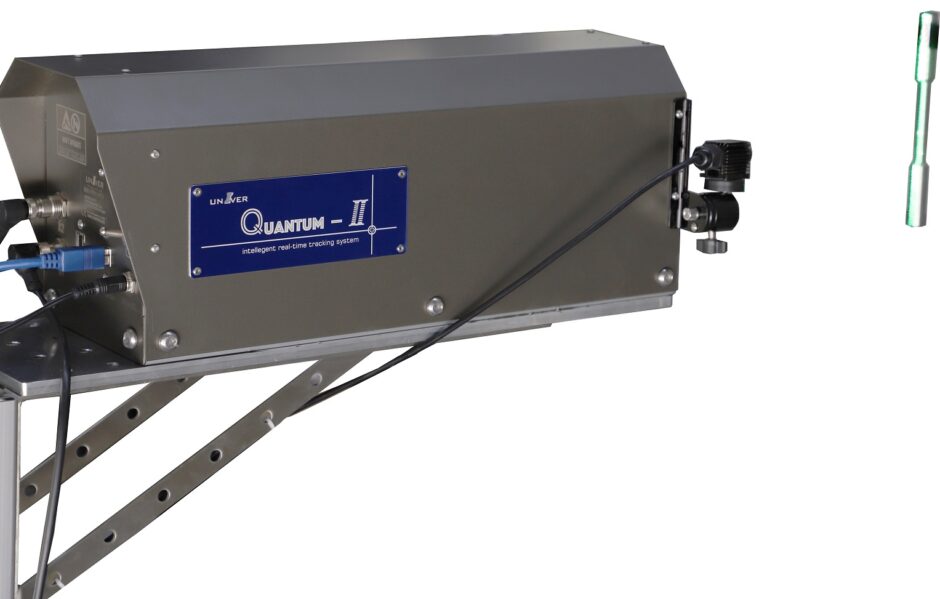Univer Quantum-Ⅱ Video Extensometer used for a steel mill in Southern China
No need any special preparations on samples such as markings and paintings, directly load sample onto grips and start test.
A Comparision Table to see How Univer Quantum-Ⅱ Video extensometers improve the convenience and correctness of conventional tensile testing of steels
|
Conventional Way For Tensile Testing of Steels |
Tensile Testing of Steels With Univer Quantum-ⅡVideo extensometer |
|
Take every sample onto the gauge marking machine and making gauge dots on sample, because Elongation after break should be calculated from the location of breaking point on sample, gauge dots as references to make this calculations |
No this kind of work Univer Quantum extensometers offer virtual gauge dot markings and always allocate the extensometer gauges over the potential break point on sample, it means the breaking point always inside and close to the middle of extensometer gauges |
|
Spray or Markings on sample surface when using other video extensometers |
No this kind of work
|
|
Interference by the environment light when using some other video extensometers in the market |
No this kind of problem |
|
Attach and remove extensometer during the test when using contact-type extensometers |
No this kind of work |
|
Problems happens for contact-type extensometers l Slippages on extensometer arms l Potentially damage the extensometer for most destructive tests l Accuracy changed over the time of usage l Extensometer gauge is not adjustable |
No this kind of problem |
|
Lateral strain measurement is difficult or impossible when using other extensometers |
Univer Quantum extensometers can measure lateral strain and also the diameter/width of necking position |
|
Piece breaking samples together to measure the elongation after break, different operators could have different measuring results |
No this kind of work Quantum extensometers can measure the diameter/width of necking position and results are accurate |
|
Piece breaking samples together to measure area reduction, different operators could have different measuring results |
No this kind of work Quantum extensometers can measure the diameter/width of necking position and results are accurate |


